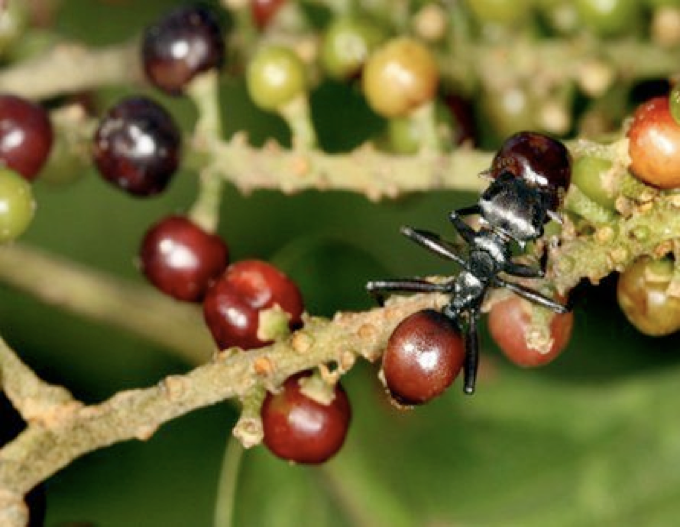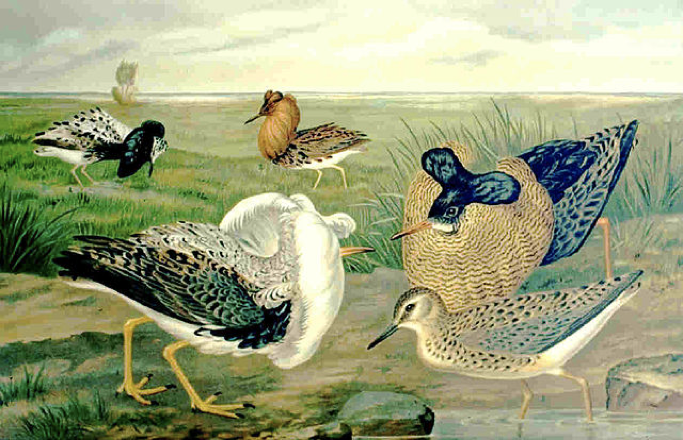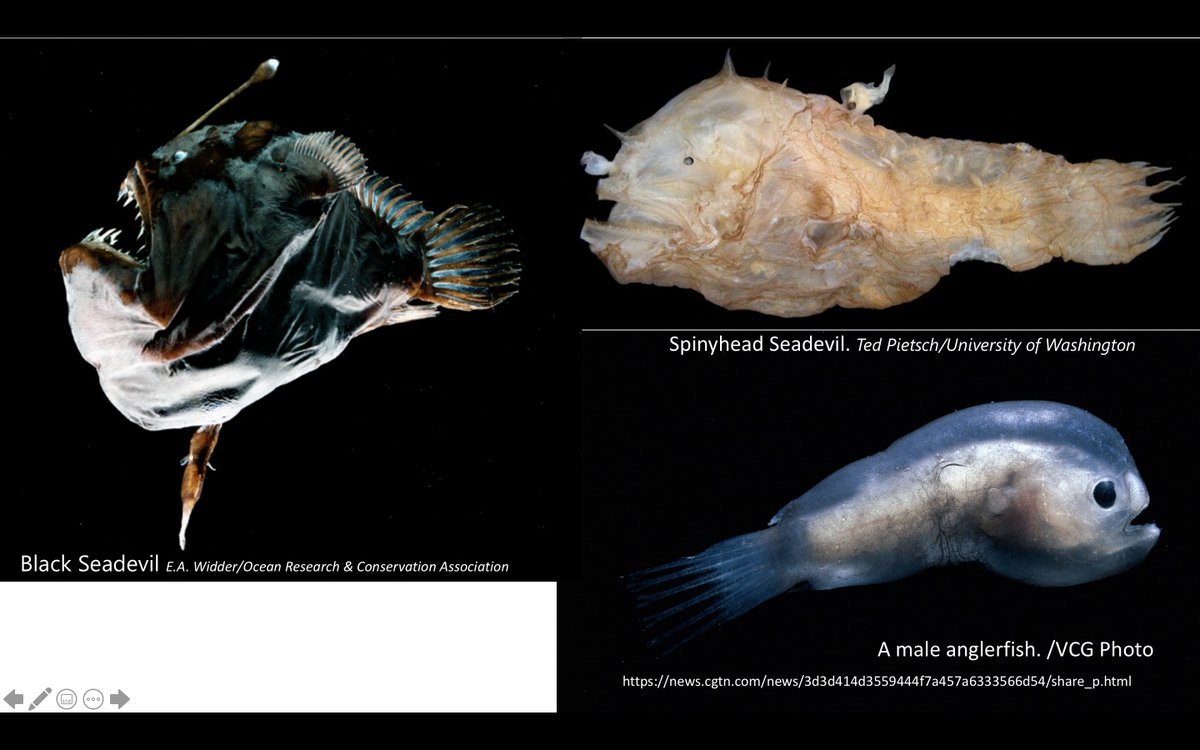Recording short "adaptation corner" segments to break up the material for my Intro to Evolution class. Will definitely be borrowing lots of egs from this wonderful thread. Thanks to everyone who responded to @DavidBLowry https://twitter.com/DavidBLowry/status/1337538691355582465">https://twitter.com/DavidBLow...
Also dipping into this thread. Thanks @SMWadgymar! https://twitter.com/SMWadgymar/status/1338611082831728641">https://twitter.com/SMWadgyma...
One of the wonderful things about twitter is the constant stream of neat organismal biology that folks post. It& #39;s a wonderful source of inspiration, and great for finding new egs for courses.
Up in today& #39;s recording (for the fossil record & gradual evolution) was the gradual evolution of bone density to aid swimming in extinct aquatic sloths https://www.calacademy.org/explore-science/aquatic-sloths">https://www.calacademy.org/explore-s... https://royalsocietypublishing.org/doi/full/10.1098/rspb.2014.0192">https://royalsocietypublishing.org/doi/full/...
Next adaptation corner, why is this ant behaving like a berry? @ASNAmNat https://www.journals.uchicago.edu/doi/abs/10.1086/528968">https://www.journals.uchicago.edu/doi/abs/1...
Next up in class adaptation corner, the evolution of heat sensing in snakes and bats via the co-option of wasabi and capsaicin receptors
https://www.ncbi.nlm.nih.gov/pmc/articles/PMC2855400/">https://www.ncbi.nlm.nih.gov/pmc/artic... https://www.ncbi.nlm.nih.gov/pmc/articles/PMC3535012/">https://www.ncbi.nlm.nih.gov/pmc/artic...
https://www.ncbi.nlm.nih.gov/pmc/articles/PMC2855400/">https://www.ncbi.nlm.nih.gov/pmc/artic... https://www.ncbi.nlm.nih.gov/pmc/articles/PMC3535012/">https://www.ncbi.nlm.nih.gov/pmc/artic...
Convergent evolution of Pitcher plants in today& #39;s class adaptation corner, both at the morphological level [ https://nph.onlinelibrary.wiley.com/doi/full/10.1111/nph.14879,">https://nph.onlinelibrary.wiley.com/doi/full/... pic from here] and of their digestive proteins [ https://www.nature.com/articles/s41559-016-0059]">https://www.nature.com/articles/...
featuring the amazing shrew loo for poo [as well as the convergent bat roost pitcher plant] https://twitter.com/dtgwynne/status/1337752543603134465">https://twitter.com/dtgwynne/...
Next up on evolution class adaptation corner. Frequency-dependent selection in Ruffs ( http://83.149.228.85/fundecology/behaviour/Widemo_1998.pdf ) maintaining inversion alleles https://www.nature.com/articles/ng.3430">https://www.nature.com/articles/... & https://www.nature.com/articles/ng.3443">https://www.nature.com/articles/... (painting by Johann Friedrich Naumann 1780– 1857).
Kinda mindblowing that no one realized that there was a rare, female-mimicking male morph till the mid-2000s [ https://royalsocietypublishing.org/doi/10.1098/rsbl.2005.0416">https://royalsocietypublishing.org/doi/10.10... if I& #39;m understanding this correctly] and that this strange system has been around for millions of years.
Enjoyed talking about this, but couldn& #39;t quite make up my mind if it truly fits in "adaptation corner". Such -ve frequency dependency could actually be lowering the mean fitness of the population, yet the males who initially pursued these strategies were increasing their fitness.
These strategies have presumably been elaborated on numerous times, and each time these "improvements" within morphs could be said be adaptive in that they have out-competed ancestral versions of the morph. Yet morphs have presumably maintained much the same stalemate.
Presumably, whether you think of these as adaptations, i.e. traits that increase fitness, depends on your frame of reference. (Mostly procrastinating from writing a gradescope homework assignment.)
Next up in the evolution class adaptation corner: the tiny males of some deepsea anglerfish species. Which bite onto females and wait for eggs to be released. In some species, they permanently fuse with a female and make use of her respiratory and digestive system
Males in some species weren& #39;t found till 1920s, when they dissected weird embryos attached to female. In some cases upward of 8 male anglerfish have been found fused to 1 female. Presumably, this is an adaptation to the extreme difficulty of finding a mate in the deepsea.
But why doesn& #39;t the female immune system reject the fusing male body? Well it seems like in these species with extreme male fusing large portions of the adaptive immune system have been sacrificed (pdf here: https://pure.mpg.de/rest/items/item_3246615_1/component/file_3246616/content">https://pure.mpg.de/rest/item... ) https://science.sciencemag.org/content/369/6511/1608">https://science.sciencemag.org/content/3...
Thanks to @Lord_of_Flyz for reminding me of this bizarre mating system, which reminded me I& #39;d seen a paper about anglerfish immune systems a few months ago. https://twitter.com/Lord_of_Flyz/status/1380208145348235265">https://twitter.com/Lord_of_F...
Also check out this awesome thread by @FlyBehaviour & others on amazing aspects of reproduction in a whole range of organisms, which @Lord_of_Flyz was responding to. https://twitter.com/FlyBehaviour/status/1380192373217591298">https://twitter.com/FlyBehavi...

 Read on Twitter
Read on Twitter

![Convergent evolution of Pitcher plants in today& #39;s class adaptation corner, both at the morphological level [ https://nph.onlinelibrary.wiley.com/doi/full/... pic from here] and of their digestive proteins [ https://www.nature.com/articles/... Convergent evolution of Pitcher plants in today& #39;s class adaptation corner, both at the morphological level [ https://nph.onlinelibrary.wiley.com/doi/full/... pic from here] and of their digestive proteins [ https://www.nature.com/articles/...](https://pbs.twimg.com/media/EykOuiBVgAIv-sh.png)




